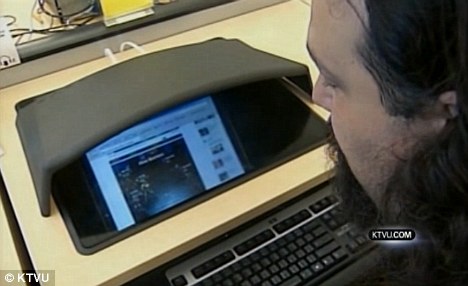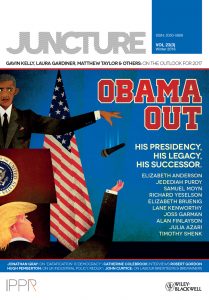Porn in Public?
Should public spaces, like libraries, ban pornography? This past week, the San Francisco Public Library made it easier for those who want to use the library’s online services to view illicit materials by installing shields on 18 of its public computers at the Civic Center branch. In the tradition of anti-censorship, the librarians refuse to censor websites, including those containing pornographic materials. Yet, they want to address concerns from some of their patrons who were troubled that they might accidentally see inappropriate content while visiting the library. A librarian reported to KTVU that they are “always looking for any kind of elegant solution that strikes a balance between the right to privacy and folks that want to use the library for any other intended purpose.” The privacy shields attempt to achieve this balance by protecting unwanted eyes from viewing others’ screens.
Not surprisingly, this new policy has stirred up controversy both in San Francisco and across the nation. Fox News reports that anti-pornography advocacy groups like Morality in Media think the shields will not be effective because patrons can simply look over the shoulder of someone seated at a computer and see what he/she is viewing. A spokesperson from Morality in Media further argued that access to pronographic content should be prohibited by common sense: “I mean porn in the library? There’s no place for that.”
Underlying some of these concerns about unwanted viewership is the fear that children might be exposed to sexually explicit materials. This San Diego blogger explains that libraries should be places for children to be children, arguing that we should “let children enjoy their childhoods by keeping open displays of porn and profanity as far away from them as possible.” Still, the anxiety over children and pornography is neither surprising nor new. As Feona Attwood (2011) describes in her Sociology Compass article, children’s sexuality, particularly around pornographic images, has a tendency to incite public discourse and disapproval.
Yet, I think these concerns will turn out to be unfounded. On a practical level, how many people will look over someone’s shoulder to view the content on their computer? However, my support for the privacy shields is grounded in my anti-censorship perspective. Like the San Francisco librarians, I do not support censorship, especially of pornographic materials. This stance is informed by my position as a feminist and a researcher of pornography.
Since the 1970s, many feminists have called for the eradication and censorship of pornography. Anti-pornography feminist organizations, like Women Against Pornography in the 1970s and Stop Porn Culture today, argue that pornography is harmful for women: Pornography causes violence against females. The perceived (yet ultimately unfounded) connection between pornography and violence against women led to public initiatives like the Minneapolis Anti-Pornography Civil Rights Ordinance , which sought to hold pornographers civilly responsible for violence caused by pornography. Yet these initiatives were short sited and politically disingenuous, especially since empirical evidence has yet to show a significant link between violence and pornography consumption. They did lead, however, to unlikely – and unhealthy – alliances with political conservatives who shared only the concerns about pornography and not the larger feminist goals of gender equality. In places where anti-porn ordinances actually passed, like in Canada, the result was a disproportionate amount of censorship of lesbian, gay, bisexual, and transgender erotic materials, showing that such political moves can be co-opted to further other forms of discrimination (see Segal in More Dirty Looks). Given this history, we have reason to be wary of censorship, especially since these types of initiatives can be so easily co-opted by those who ultimately may not share similar goals.
The San Francisco librarians are also wary of censorship, but they have found a solution that should appease most people. The privacy shields are a good middle ground. They allow people to access illicit materials without exposing others to the content. People can make the choice to view pornographic materials or they can avoid the 18 computers with the privacy shields. What do you think? Do you support the San Francisco library policy?
Suggested Readings:
Attwood, Feona. 2011. “The Paradigm Shift: Pornography Research, Sexualization, and Extreme Images.” Sociology Compass 5(1): 13-22.
Bronstein, Carolyn. 2011. Battling Pornography: The American Feminist Anti-Pornography Movement, 1976-1986. New York: Cambridge University Press.
Ciclitira, Karen. 2004. “Pornography, Women and Feminism: Between Pleasure and Politics.” Sexualities 7(3): 281-301





1520-6688/asset/Capture.jpg?v=1&s=b5076c49a7d1c5f1b9cf0dd9cd292394a3be81cc)

Does the SF Library system stock porn for its patrons? Is there a policy that would de facto limit the ability of somebody to walk into the kiddie reading room and start flipping through their own porn magazines? To say the librarians are not making curation decisions all the time, or enforcing normative behavior in the facility, would be completely disingenuous. This is neither a “censorship” question nor a feminism question.
What it is, is a consequence of the library’s attempt to be relevant to parts of its community by providing internet access to low income patrons, including entertainment use as well as reference use. But open internet access creates a space for uncurated content and spottily supervised behavior. It’s not surprising that it doesn’t really fit into the library content model or into anybody’s normative expectations of what the library experience should be (including those of the librarians, who really don’t want to have to be the porn patrol).
If the city wants to provide open access to the internet, fine. But open access to the internet is often not for “family” purposes (or “NSFW” if your prefer) and such access ought to be in a separate facility without expectations of “family” behavior (and supervised by somebody other than librarians).
I haven’t seen the news article, but is this really a problem? My local library has somewhere around 2 dozen computers – they are almost all in use. I cannot imagine that anyone has ever tried to view pornography with two strangers on either side of them. Or is this some kind of moral panic stemming from the increasing mix of private and public space – such as private phone conversations in public places? This is not a rhetorical question – has anyone done a study on this particular problem?
I believe that the privacy shields are good way to find a middle ground between maintaining a sense of privacy, yet allowing the freedom for those who desire it. In my opinion though, the viewing of pornography should be done in private do to sexual stimulus one might experience while viewing it. That itself is a private matter and for an individual to be getting off in public is invading the space of the other public users. Libraries are also places where families can go to be together for educational and entertaining purposes. The desire to view pornography by others should not impose on those who go to the library with young children.
i see what your saying, however there are more ressons to view pornograthy then for sexual pleasure (study for one) also not everyone gets aroused by pornography. talking as an a-sexual, i just think it hillarous. (apoligies for spelling mistakes)